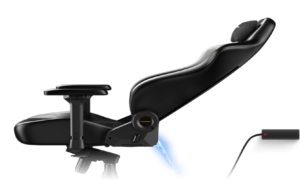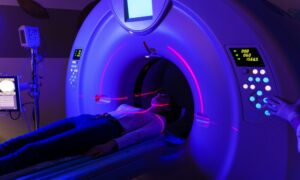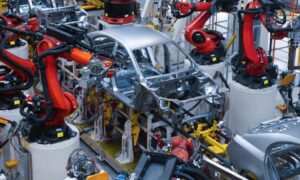Welcome to the future! With every passing year, technology continues to astound us with its incredible advancements. One such revolution that is set to transform our lives in ways we can only imagine is the Internet of Things (IoT). Brace yourselves as we take a deep dive into what lies ahead for this fascinating realm in 2024. From smart homes and connected cities to wearable tech and autonomous vehicles, the possibilities seem endless. So grab your virtual reality goggles, sit back, and get ready for an exhilarating ride into the not-so-distant future where everything is interconnected and innovation knows no bounds!
Introduction to the Internet of Things (IoT)
The ever-growing prevalence of technology in our daily lives has been rapidly expanding to include a new phase known as the Internet of Things (IoT). With the constant rise and advancements in smart devices, cloud computing, and big data analytics, IoT is revolutionizing the way we live, work, and interact with our surroundings.
So what exactly is the Internet of Things? In simple terms, it refers to the interconnection between physical devices and objects through a network that enables them to collect and exchange data without human involvement. This allows for seamless communication between devices, creating a web of interconnected technology.
At its core, IoT involves embedding sensors and microchips into everyday objects that are then connected to the internet. These objects can range from smartphones, smart home appliances, wearables such as fitness trackers or even cars – essentially anything with an on/off switch can become part of IoT. The connectivity between these devices allows for real-time monitoring, tracking, and control from anywhere with an internet connection.
Overview of IoT in 2019
The year 2019 marked significant growth and advancements in the Internet of Things (IoT) industry. From smart homes to industrial automation, IoT has been transforming various sectors and paving the way for a more connected and efficient future.
One of the main highlights of IoT in 2019 was the increasing adoption by businesses across industries. According to a report by Gartner, the number of connected devices worldwide is expected to reach 20.4 billion by 2020, with commercial IoT applications being the fastest-growing segment. This trend can be attributed to the increased understanding of how IoT can improve productivity, reduce costs, and drive innovation.
Another important development in 2019 was the evolution of edge computing in IoT. Edge computing refers to processing data closer to its source instead of sending it all to a centralized cloud server. With this approach, organizations can reduce latency, improve security, and save on bandwidth costs while still harnessing insights from their vast amounts of data.
In terms of technology advancements, artificial intelligence (AI) played a significant role in enhancing IoT capabilities. By integrating AI algorithms into IoT devices and systems, companies were able to achieve more sophisticated analytics, predictive maintenance, and autonomous decision-making processes.
Moreover, there has been an increased focus on developing secure and scalable solutions for IoT deployments. As cyber threats continue to rise alongside the growing number of connected devices, organizations have prioritized implementing robust security measures at every stage – from hardware design to software updates –to protect their networks and valuable data .
The year also saw IoT gaining traction in the healthcare industry, with the rise of connected medical devices, remote patient monitoring systems, and healthcare wearables. These solutions have improved the quality of care for patients and allowed for more efficient data collection and analysis by healthcare providers.
Lastly, the application of IoT expanded beyond the traditional use cases in smart homes and industrial automation. 2019 saw innovative deployments in areas such as smart cities, autonomous vehicles, agriculture, and retail. With the increasing availability of affordable sensors and connectivity options, we can expect to see more diverse applications of IoT in various industries in the coming years.
Overall, 2019 was a significant year for IoT as it continued to make advancements and pave the way for a more connected world. With ongoing developments in technology and increasing adoption by businesses, we can expect even more growth and innovation in the IoT industry in the future.
IoT Trends and Predictions for 2024
Introduction:
The Internet of Things (IoT) has come a long way since its inception and continues to revolutionize the way we interact with technology. With the growth of smart devices, sensors, and connected systems, the IoT market is expected to rapidly expand in the coming years. In this section, we will delve into some of the top trends and predictions for 2024 in the world of IoT.
1. The Rise of Smart Cities:
One major trend that is expected to dominate the IoT landscape in 2024 is the rise of smart cities. With an increasing global population living in urban areas, there is a growing need for efficient and sustainable management of resources. This has led to governments investing heavily in developing smart city infrastructure and implementing IoT solutions for energy management, transportation, waste management, and public safety.
2. Edge Computing Becomes Mainstream:
In 2024, edge computing is predicted to become mainstream as more connected devices generate massive amounts of data that cannot be processed efficiently through traditional cloud-based systems. Edge computing allows for data processing closer to where it is being generated, reducing latency and improving response times. It also addresses privacy concerns by keeping sensitive data local instead of sending it over high-speed networks.
3. Artificial Intelligence (AI) Integrated with IoT:
The integration of AI with IoT will take center stage in 2024 as companies strive to achieve greater efficiency and automation through predictive analytics. By combining machine learning algorithms with sensor data from connected devices, businesses can gain valuable insights to optimize their operations and enhance customer experience.
4. More Focus on Cybersecurity:
As the number of connected devices continues to grow, cybersecurity will be a major concern in 2024. With the potential for hackers to access sensitive data through vulnerable IoT devices, there will be an increased emphasis on developing robust security protocols and implementing regular firmware updates to mitigate risks.
5. Adoption of 5G Networks:
The rollout of 5G networks is predicted to have a significant impact on the IoT market in 2024. With faster data transfer speeds, low latency, and higher network capacity, 5G will enable more devices to connect and exchange data seamlessly, thus driving the growth of interconnected smart systems.
6. Growth in Industrial IoT (IIoT):
In 2024, we can expect significant growth in the industrial IoT sector as more companies adopt digital transformation strategies. IIoT solutions offer valuable insights into operations and processes, allowing businesses to optimize efficiency, reduce costs, and improve productivity.
Impact of IoT on various industries
Introduction:
The Internet of Things (IoT) has been revolutionizing the way businesses and industries operate. With the increasing use of connected devices and smart technology, the possibilities for IoT seem endless. In this section, we will discuss the impact of IoT on various industries, how it is transforming processes, and what we can expect in the future.
1. Manufacturing Industry:
One of the earliest adopters of IoT has been the manufacturing industry. With IoT sensors embedded in machines and equipment, real-time data collection and analysis have become possible. This has enabled manufacturers to optimize their production processes, reduce downtime, and improve overall efficiency. IoT has also facilitated predictive maintenance to identify potential issues before they occur, reducing maintenance costs significantly.
2. Healthcare Industry:
IoT has brought significant advancements to the healthcare industry by enabling remote patient monitoring, personalized medicine, and improved access to health services. Connected medical devices can collect patient data in real-time and transmit it to healthcare providers for analysis. This allows for timely diagnosis and treatment planning while empowering patients to take control of their health through wearable technology.
3. Agriculture Industry:
The agriculture sector has embraced IoT in several ways with smart farming techniques such as precision agriculture being adopted widely. Sensors attached to crops or livestock can collect data on soil moisture levels, temperature changes, humidity levels, etc., which are then used by farmers to make informed decisions on irrigation schedules or animal welfare measures.
Potential challenges and concerns with widespread use of IoT
1. Potential Security Risks: With the widespread use of IoT devices, there is a growing concern about their security and vulnerability to cyber attacks. As these devices collect and transmit sensitive data, any security breach could have serious consequences. Hackers can potentially access personal information, disrupt services or even cause physical harm through controlling critical systems.
2. Data Privacy: The large amount of data that is gathered, stored and analyzed by IoT devices raises concerns about privacy rights. Users may not be fully aware of what data is being collected from them and how it will be used or shared with third parties.
3. Interoperability Issues: With the number of different IoT devices constantly increasing, interoperability issues may arise between different manufacturers’ products. This means that certain devices may not be able to communicate with others, leading to limited capabilities and functionality.
4. Technical Limitations: While the Internet of Things promises increased convenience and efficiency, there are limitations to its technical capabilities as well. For example, connectivity issues can occur in remote areas with poor network coverage or during power outages.
5. Dependency on Technology: As we become more reliant on technology in our daily lives, the potential failure or malfunction of connected devices becomes a major concern. A single device failure could lead to disruption in multiple interconnected systems.
Case studies showcasing current applications of IoT
The Internet of Things (IoT) is an ever-expanding network of connected devices that has revolutionized the way we interact with technology. From smart home systems to self-driving cars, IoT is transforming the way we live and work. In this section, we will explore some of the most exciting case studies showcasing current applications of IoT.
1. Smart Home Systems:
Smart home systems have become increasingly popular in recent years, allowing homeowners to control various aspects of their homes through a single device or app. These systems use sensors and internet connectivity to automate tasks such as adjusting temperature, turning on/off lights, and even ordering groceries. For example, Nest’s thermostat uses motion sensors to detect when someone is at home and adjusts the temperature accordingly, resulting in energy savings for homeowners.
2. Wearable Technology:
Wearable technology has taken off in recent years with the rise of fitness trackers and smartwatches. These devices use IoT to track health data such as heart rate, steps taken, and sleep patterns. This information can then be used by users to monitor their overall health and make lifestyle changes if necessary.
3. Medical Applications:
IoT has also made significant advancements in the medical field. For instance, remote patient monitoring allows doctors to keep track of their patients’ vital signs from afar through wearable devices or sensors attached to medication bottles. This technology has improved patient care by providing real-time data for doctors to make accurate diagnoses and adjust medications as needed.
Potential future developments in IoT technology
The field of Internet of Things (IoT) technology is constantly expanding and evolving, with new developments taking place every day. As we enter a new year, it’s an opportune time to take a deep dive into the potential future developments in this rapidly growing industry.
1. Enhanced Connectivity and Interoperability: One of the major challenges faced by IoT in 2020 was the lack of interoperability between different devices and platforms. However, this is expected to change in the coming years as more companies focus on developing solutions that can connect seamlessly with each other. This will not only improve user experience but also open up doors for creating smarter and more integrated systems.
2. Edge Computing: Currently, most IoT devices rely on cloud-based computing for data storage and processing. However, with advancements in edge computing technology, we can expect to see more devices carrying out data processing closer to their source instead of sending it all to the cloud. This will lead to faster response times and better security as sensitive data can be processed locally instead of being transmitted over networks.
3. Artificial Intelligence (AI) Integration: The combination of AI and IoT is a match made in heaven. With AI-powered analytics tools becoming more sophisticated, businesses will be able to make sense of massive amounts of real-time data gathered from IoT devices, allowing them to make well-informed decisions quickly and efficiently.
Conclusion
The Internet of Things has already made significant advancements in the way we live, work, and interact with technology. With the pace of innovation constantly accelerating, it is safe to say that in 2024, our world will be even more interconnected and reliant on IoT devices. As we continue to embrace this technology-driven future, let us not forget the importance of privacy and security measures needed to protect our personal data. Keeping an eye on emerging trends and adapting accordingly will allow us to maximize the potential benefits while minimizing any potential risks. So buckle up for an exciting ride into a fully connected world where possibilities are endless!



































